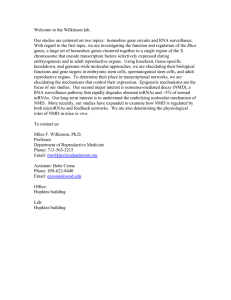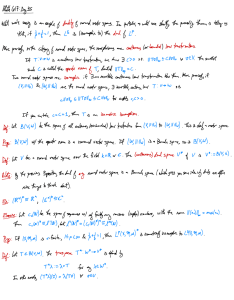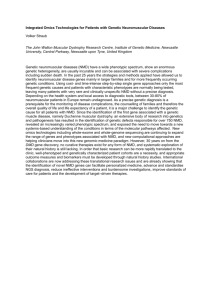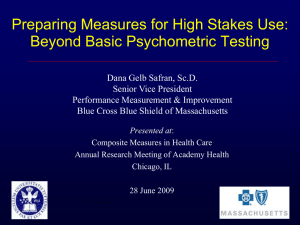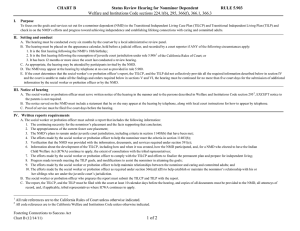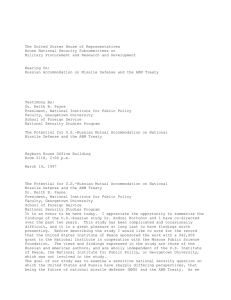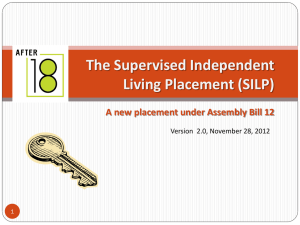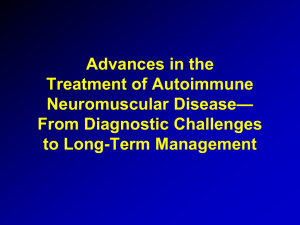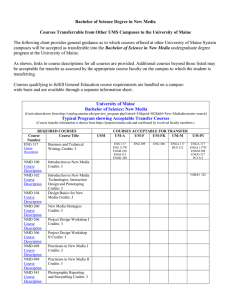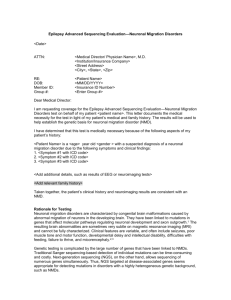A UPF3-mediated regulatory switch that maintains RNA surveillance
advertisement
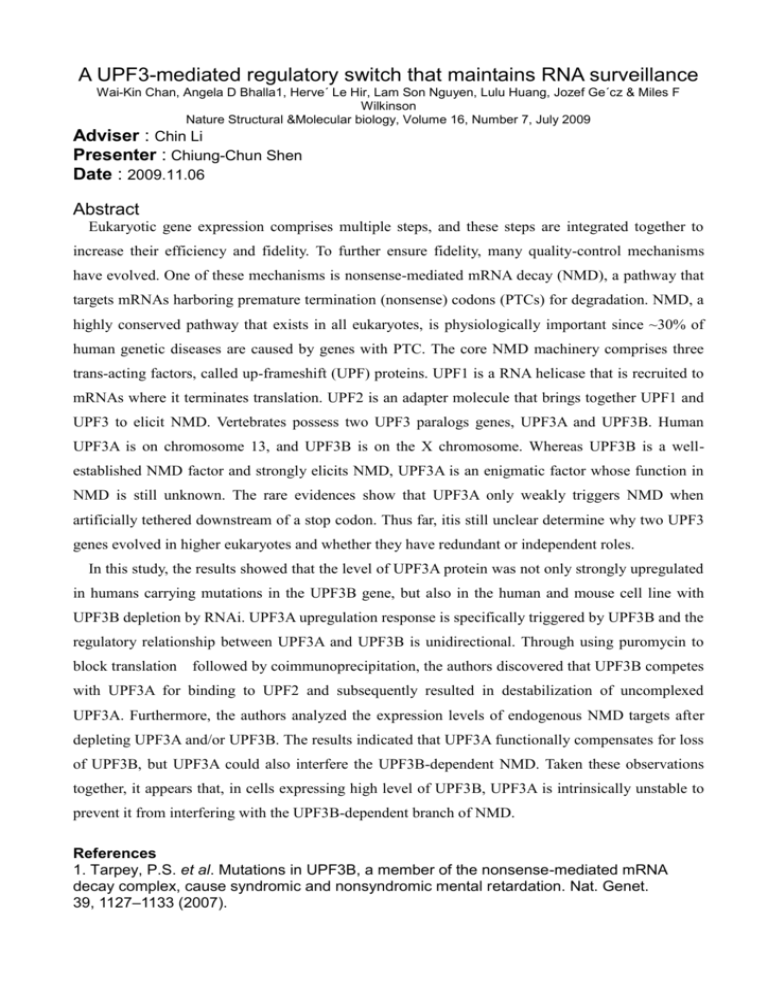
A UPF3-mediated regulatory switch that maintains RNA surveillance Wai-Kin Chan, Angela D Bhalla1, Herve´ Le Hir, Lam Son Nguyen, Lulu Huang, Jozef Ge´cz & Miles F Wilkinson Nature Structural &Molecular biology, Volume 16, Number 7, July 2009 Adviser : Chin Li Presenter : Chiung-Chun Shen Date : 2009.11.06 Abstract Eukaryotic gene expression comprises multiple steps, and these steps are integrated together to increase their efficiency and fidelity. To further ensure fidelity, many quality-control mechanisms have evolved. One of these mechanisms is nonsense-mediated mRNA decay (NMD), a pathway that targets mRNAs harboring premature termination (nonsense) codons (PTCs) for degradation. NMD, a highly conserved pathway that exists in all eukaryotes, is physiologically important since ~30% of human genetic diseases are caused by genes with PTC. The core NMD machinery comprises three trans-acting factors, called up-frameshift (UPF) proteins. UPF1 is a RNA helicase that is recruited to mRNAs where it terminates translation. UPF2 is an adapter molecule that brings together UPF1 and UPF3 to elicit NMD. Vertebrates possess two UPF3 paralogs genes, UPF3A and UPF3B. Human UPF3A is on chromosome 13, and UPF3B is on the X chromosome. Whereas UPF3B is a wellestablished NMD factor and strongly elicits NMD, UPF3A is an enigmatic factor whose function in NMD is still unknown. The rare evidences show that UPF3A only weakly triggers NMD when artificially tethered downstream of a stop codon. Thus far, itis still unclear determine why two UPF3 genes evolved in higher eukaryotes and whether they have redundant or independent roles. In this study, the results showed that the level of UPF3A protein was not only strongly upregulated in humans carrying mutations in the UPF3B gene, but also in the human and mouse cell line with UPF3B depletion by RNAi. UPF3A upregulation response is specifically triggered by UPF3B and the regulatory relationship between UPF3A and UPF3B is unidirectional. Through using puromycin to block translation followed by coimmunoprecipitation, the authors discovered that UPF3B competes with UPF3A for binding to UPF2 and subsequently resulted in destabilization of uncomplexed UPF3A. Furthermore, the authors analyzed the expression levels of endogenous NMD targets after depleting UPF3A and/or UPF3B. The results indicated that UPF3A functionally compensates for loss of UPF3B, but UPF3A could also interfere the UPF3B-dependent NMD. Taken these observations together, it appears that, in cells expressing high level of UPF3B, UPF3A is intrinsically unstable to prevent it from interfering with the UPF3B-dependent branch of NMD. References 1. Tarpey, P.S. et al. Mutations in UPF3B, a member of the nonsense-mediated mRNA decay complex, cause syndromic and nonsyndromic mental retardation. Nat. Genet. 39, 1127–1133 (2007).
